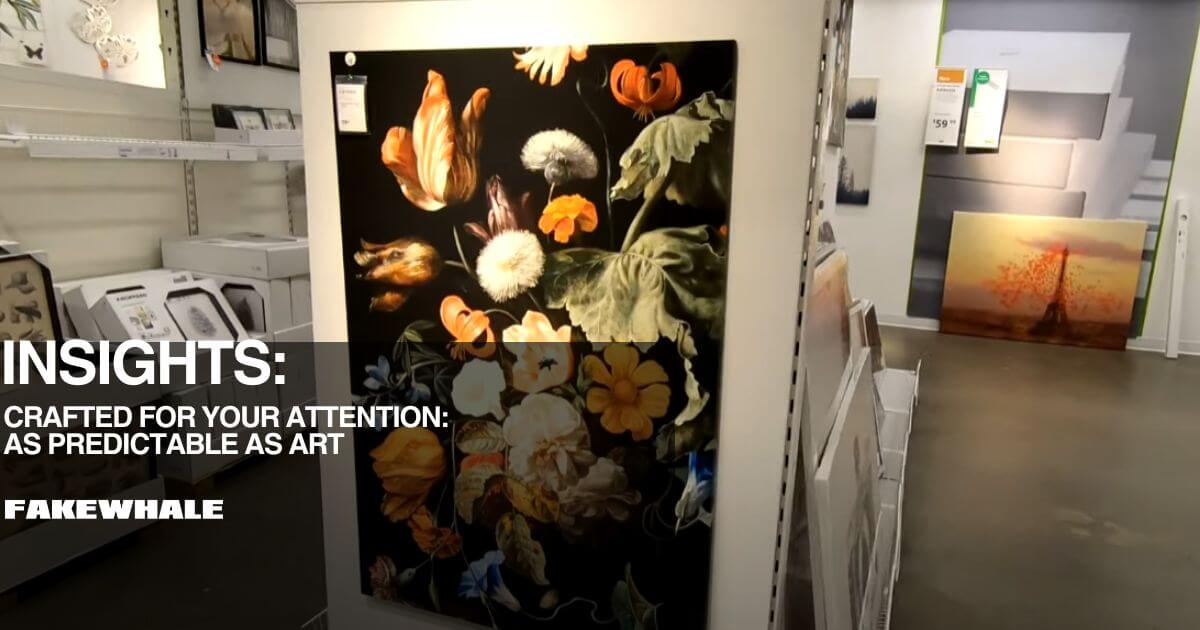There’s something deeply alluring about predictability. It’s like a mental embrace, a kind of linguistic stillness that shields us from the unknown. Everyday communication rituals, “How are you?”, “Good, and you?”, aren’t meant to inform, but to affirm. They’re gestures of inclusion, cultural signals that say: We’re speaking the same code. Just like we laugh at a TikTok sketch not because it’s new, but because the gag is familiar.
The human mind isn’t built for the unknown, it’s an obsessive pattern-recognition machine. It wants to see what it’s seen before, to feel safe within familiar forms.
This same logic, subtly reactionary, seeps into the world of art as well, precisely where we’d expect openness, risk, and movement toward the unfamiliar.

The IKEA section dedicated to home accessories, decorative panels, and printed paintings.
In the contemporary art system, the pursuit of originality has paradoxically produced a new orthodoxy: the predictability of the unexpected. The “perfect” artwork is not the one that takes risks, but the one that knows the code. Polished steel, marble, glass, hyper-smooth surfaces. Large scale, noble materials, sterile political allusions, highly photogenic installations. Every element is a clear signal to collectors, curators, and the public: “This is art. Here’s the visual pedigree you were expecting.”
It’s no longer art that builds its own language.
It’s the prepackaged language of art that chooses the works.
Too often we find ourselves writing about exactly this. But it’s not a polemical stance.
We’re fascinated by it.
We can’t help ourselves.
Each time we face it, we go a little deeper, because we feel that within that endless repetition of the same forms, the same concepts, the same materials, something bigger is at stake: the very relationship between imagination and system.
Repetition is not a disease, it’s a structure.
And when a structure becomes invisible, that’s when it’s time to look it in the eye.
Let’s think about it: what makes a work “strong”? What makes it feel “right” in an exhibition context, at a fair, on a white wall or in a foundation’s feed?
Most of the time, it’s not the content, not the gesture, not the vision.
It’s its ability to fit into an already legitimized form.(…)
READ THE FULL ARTICLE ↓
USEFUL LINKS:




